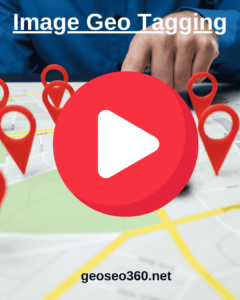GeoSeo360.net: How To Use Image Geo Tagging for SEO Optimization
In the dynamic landscape of digital marketing and SEO, staying ahead demands smart strategies and cutting-edge tools. GeoSeo360.net is one such innovative solution, allowing users to enhance their images through geotagging. By embedding precise geographical coordinates, descriptions, and metadata, this platform helps improve online visibility and search rankings. GeoSeo360.net provides a powerful way to optimize images for local searches, making it an essential tool for businesses and marketers. In this article, we’ll explore how it works, its key benefits, and why geotagging is a crucial element in modern SEO strategies.
Image Geo Tagging: Enhance Visibility with Location Data
Image geo tagging is the process of embedding geographical coordinates into a photo’s metadata. This data includes latitude, longitude, and sometimes altitude, helping search engines and mapping services recognize the image’s location. Businesses, photographers, and marketers use geo-tagged images to improve local SEO, increase visibility on Google Maps, and enhance user engagement. Adding location tags makes content more relevant for regional searches, benefiting industries like real estate, travel, and tourism. Online tools allow users to geotag images easily, optimizing them for better discoverability. Start geo tagging today to boost your online presence and reach the right audience!

What is Image Geotagging?
Image geotagging is the process of embedding geographical data into an image’s metadata. This information typically includes latitude, longitude, altitude, and even location descriptions. By adding these details, search engines gain a better understanding of where an image was taken or which location it is associated with.
For businesses relying on local SEO—such as restaurants, real estate agencies, or travel companies—geotagged images can significantly enhance search rankings. When users look for products or services in a specific area, geotagging helps search engines connect your content to relevant locations, increasing visibility and engagement.
How Does GeoSeo360.net Work?
GeoSeo360.net makes image geotagging effortless by providing a simple platform to upload and enrich images with location-based metadata. Users can add:
- Coordinates – Latitude and longitude values to specify the exact location.
- Descriptions – Contextual details about the image.
- Keywords – SEO-friendly tags like “Image Geo Tag” or “Geotag” to enhance search visibility.
Once the metadata is added, GeoSeo360.net seamlessly embeds this information into the image file. When search engines scan the content, they not only index the visual but also recognize its geographical significance.
A recent YouTube tutorial highlights how quickly users can optimize images with GeoSeo360.net, demonstrating step-by-step how to upload, edit, and download geotagged images in just minutes.
Why Should You Use Geotagging in Your SEO Strategy?
Search engines prioritize content that is valuable, relevant, and contextual. Geotagging adds another layer of information that enhances both visual appeal and location-based search relevance. Here’s how different industries can benefit:
- Hotels & Hospitality: A New York City hotel can geotag images of rooms and amenities, helping travelers find accommodations in Manhattan.
- Service-Based Businesses: A landscaping company can tag before-and-after project photos, showcasing work completed in specific neighborhoods to attract local clients.
- Travel Bloggers & Influencers: Bloggers can optimize their travel images with location tags, making it easier for audiences searching for those destinations to find their content.
By integrating GeoSeo360.net into your SEO workflow, you ensure that every image you publish contributes strategically to your search rankings, making your content more relevant and discoverable
